The FNIRSI 1013D is a dual-channel flat-panel oscilloscope with a rich set of features. It is cost-effective and useful to people in the maintenance and R&D industries. Although it has been on the market for a few years, I purchased one, and I decided to introduce it and disassemble it to check out the hardware design.
FNIRSI describes its oscilloscope as “small and portable”, so I assume it should include a lithium battery, a TFT LCD screen, a processor to handle the display, and another chip to process the digital signals. Let’s take it apart first to find out.
FNIRSI 1013D oscilloscope unboxing
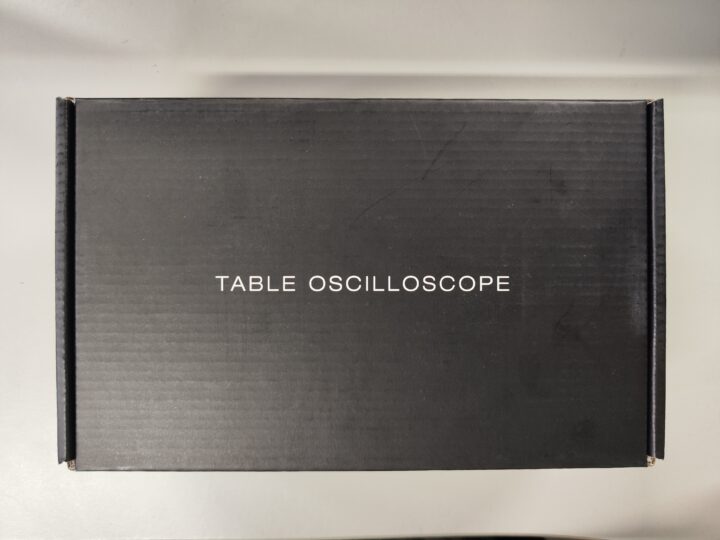
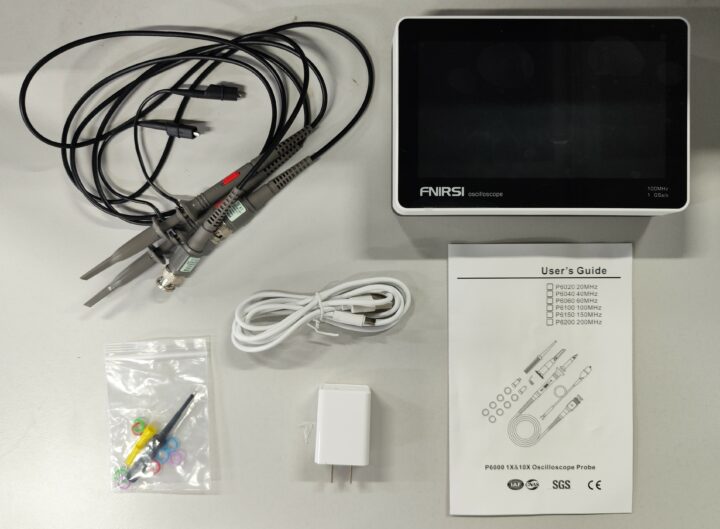
FNIRSI 1013D package content:
- 1x FNIRSI 1013D oscilloscope
- 2x 100MHz matching probes (1X and 10X)
- 1x USB cable
- 1x Charging adapter
- 1x Instruction manual
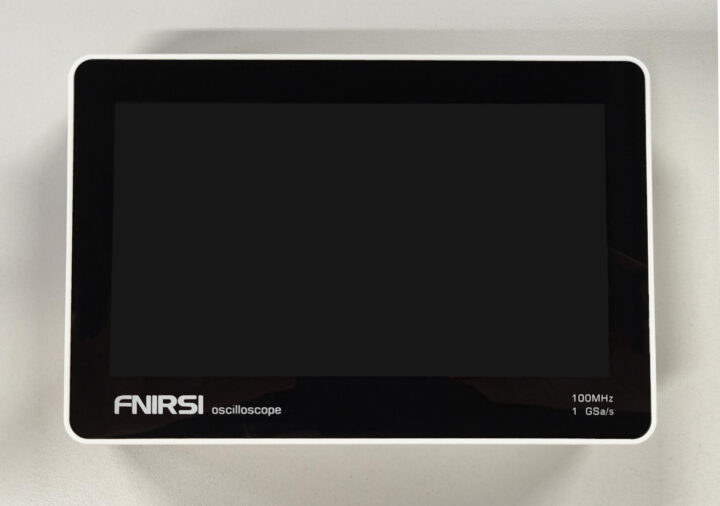
The FNIRSI 1013D adopts a 7-inch 800 x 480 resolution color TFT LCD with a capacitive touch screen.
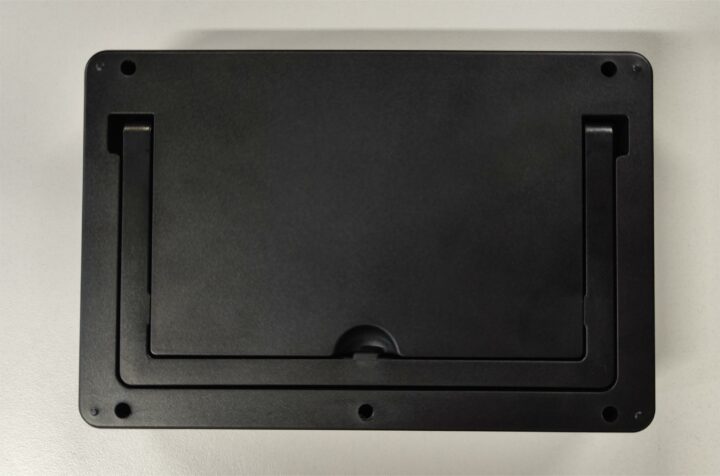
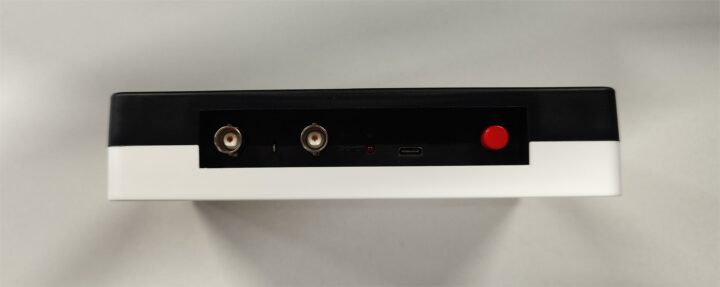
There are two input channels on the top of the FNIRSI 1013D oscilloscope to allow users to measure two different signals at the same time for comparison and analysis, for example, to compare the input and output signals of a power amplifier unit. High-voltage protection modules are built into the input channels to handle up to 400V voltage input. Besides the input channels, there are switch buttons for the power supply and a USB Type-C port. Those are the only external interfaces and buttons of the oscilloscope.
Teardown
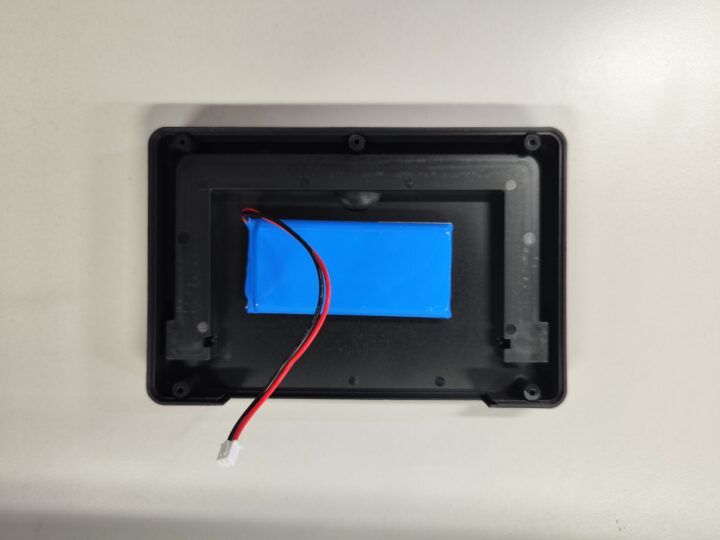
The FNIRSI 1013D is equipped with a 6,000 mAh lithium-ion battery, and the specifications state that it can be used continuously for 4 hours after five hours of charging.
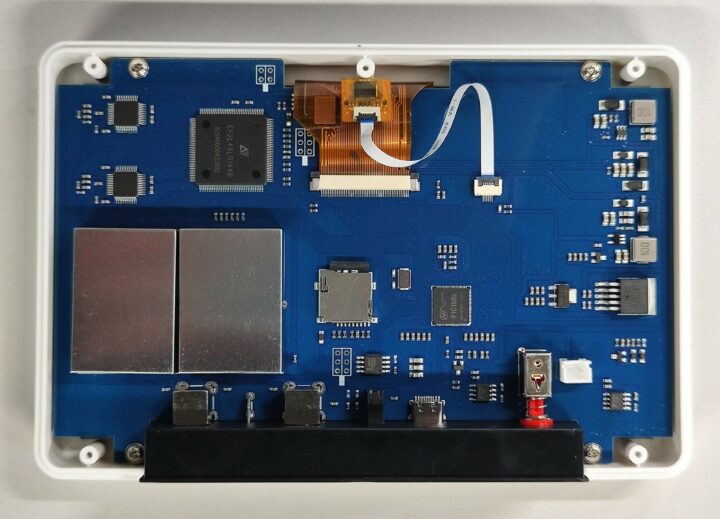
The hardware architecture uses an Arm + FPGA + high-speed ADC design. As in my initial assumptions, the oscilloscope uses the ANLOGIC EF2L45LG144B FPGA and two ADC with illegible markings used to process digital signals. Based on comments on EEVBlo, those should be AD9288 ADC chips, and we can see the display part relies on the Allwinner F1C100s ARM9 processor to drive the TFT screen.
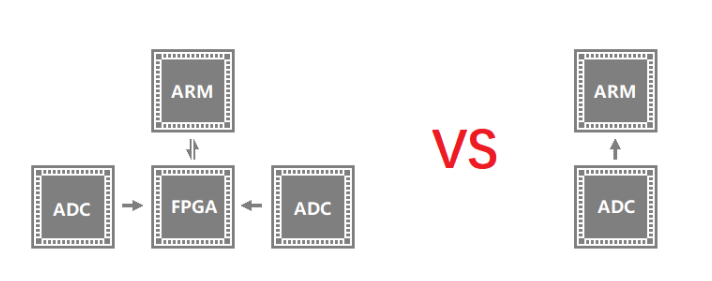
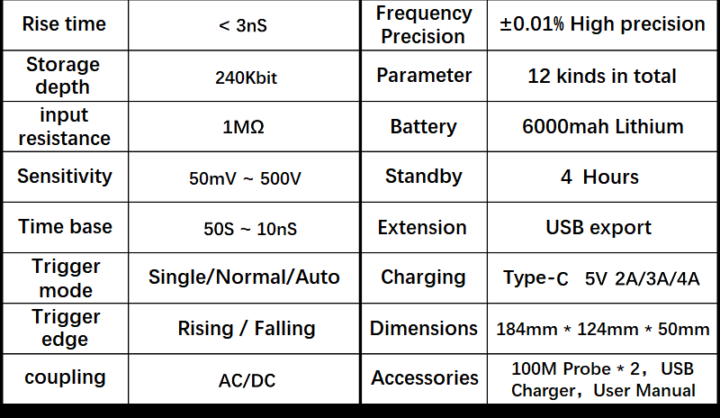
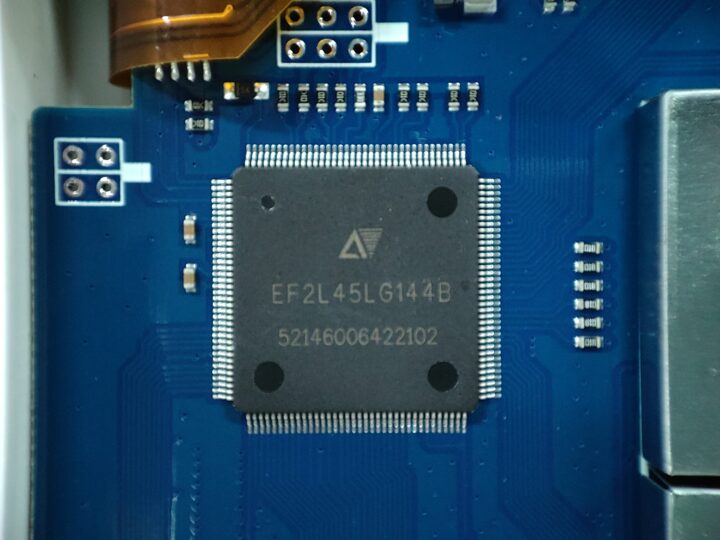
ANLOGIC EF2L45LG144B specifications:
- DFFs – 4480
- LUTs – 4480
- DistributeRAM – 35k
- eRAM
- eRAM-9K – 12
- eRAM-32K – 6
- eRAM-128K – 1
- eRAM-256K – 1
- eRAM-TotalBRAMBits – 700k
- M18*18 – 15
- PLL – 1
- ADC – 2
- USER IO – 10
- Package – LQFP133
- Size – 20 x 20mm
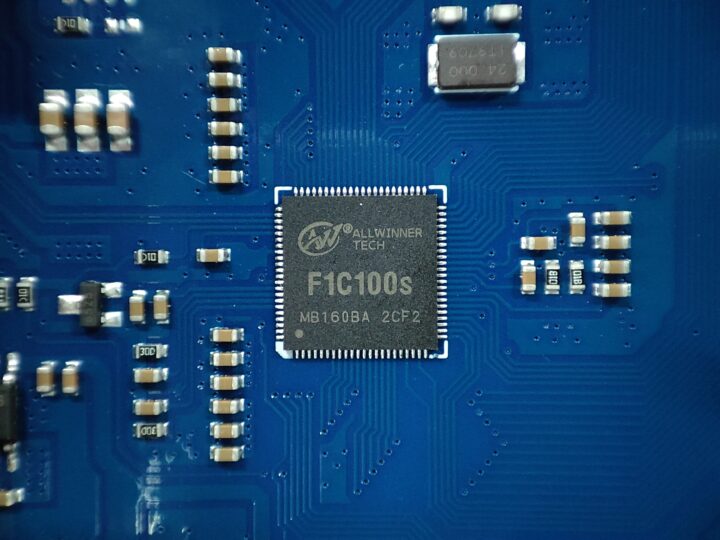
Allwinner F1C100s processor has been around for a while and featured in several articles on CNX Software with the chip found in handheld computers and even business cards.
Allwinner F1C100s specifications as a reminder:
- CPU – ARM9 CPU architecture with 16KByte D-Cache+32KByte I-Cache
- Memory – 32MB DDR (SiP)
- Storage – SD 2.0 and eMMC 4.1
- Video:
- H.264 decoding up to 1280×720 @ 30fps
- MPEG 1/2/4 encoding up to 1280×720 @ 30fps
- MJPEG encoding up to 1280×720 @ 30fps
- JPEG encode up to 8192×8192
- Display:
- LCD RGB interface up to 1280×720 @ 60fps
- TV CVBS output, supports NTSC/PAL,with auto plug detecting
- Camera:
- 8-bit CMOS sensor interface
- CVBS input for NTSC and PAL
- Audio:
- Integrated analog audio codec with 2-channel DAC and one ADC, up to 192KHz DAC sample rate, up to 48KHz ADC sample rate
- One I2S/PCM interface
- Peripherals
- 1x USB OTG
- 1x SDIO
- 1x IR
- 3x TWI
- 2x SPI
- 3x UART
- OS – Melis by Allwinner
- Package – QFN88 ,10×10 mm
- Process – 40nm
Practical use of FNIRSI-1013D oscilloscope
I used the Allwinner V853 development board beside me to conduct a simple test.
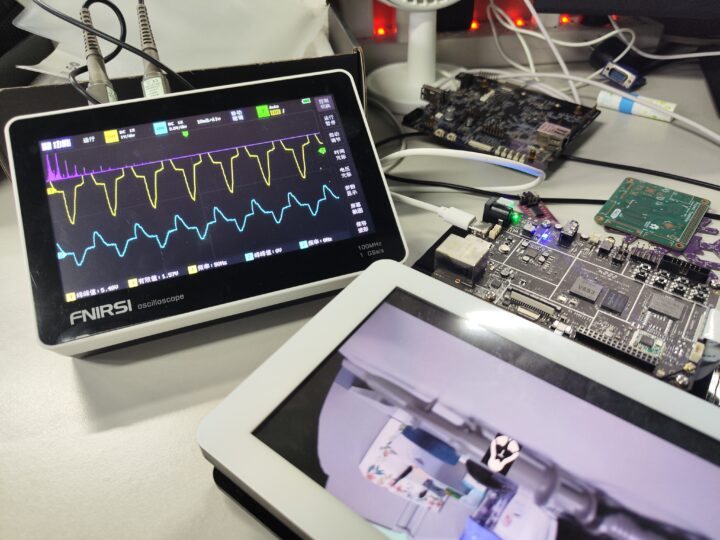
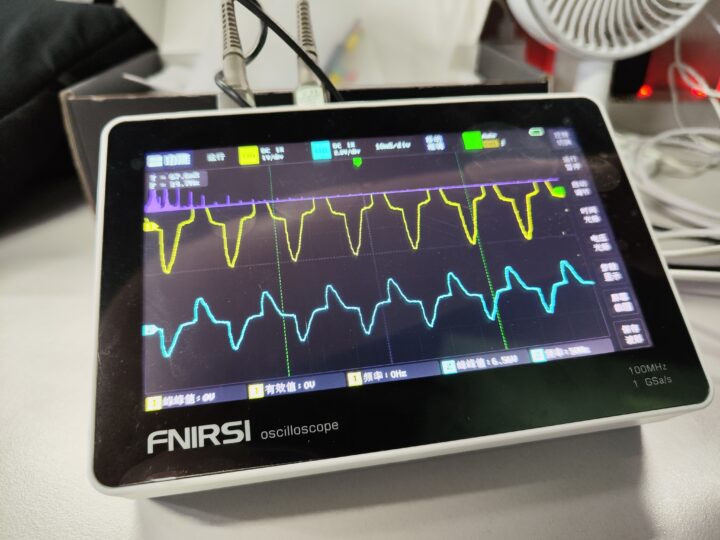
FNIRSI-1013D provides a one-button auto-adjustment function, avoiding tedious manual adjustment, and the dual-channel display facilitates real-time waveform comparison. In addition, the oscilloscope provides three different trigger modes: automatic, single, and normal. The automatic mode can be used to process sudden non-periodic mutation signals, the single mode can be used to process non-periodic digital logic signals, and the normal mode can be used to process periodic analog signals.
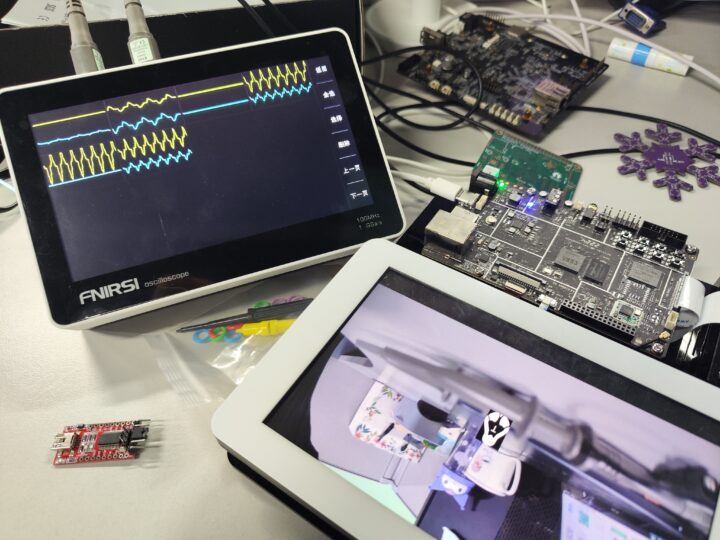
FNIRSI-1013D has a built-in 1GB of storage space. Simply click on the screenshot to save the currently displayed waveform. You can also export the waveform picture on the computer by connecting the computer via USB.
The oscilloscope is sold on Aliexpress for $127.50 with free shipping, but that price appears to be a time-limited discount.

Leo became a part-time writer for CNX Software in 2022 and works as a software engineer in an embedded software company in China. He’s been passionate about embedded development and the Internet of Things for many years, with extensive industry experience, and a new and unique vision!
Support CNX Software! Donate via cryptocurrencies, become a Patron on Patreon, or purchase goods on Amazon or Aliexpress


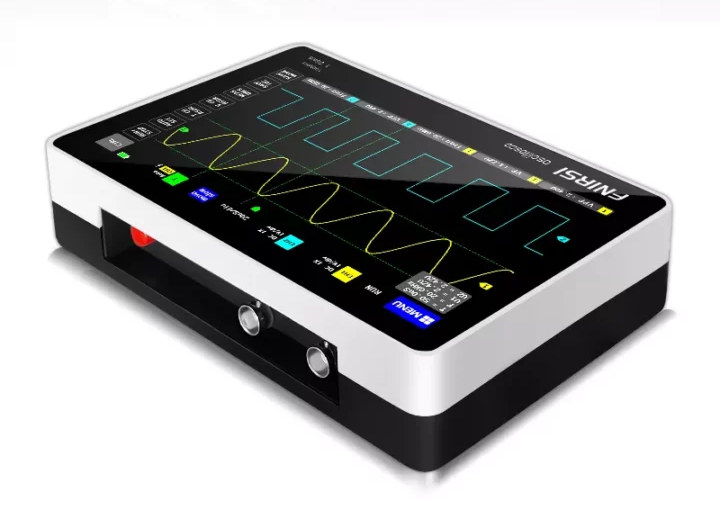
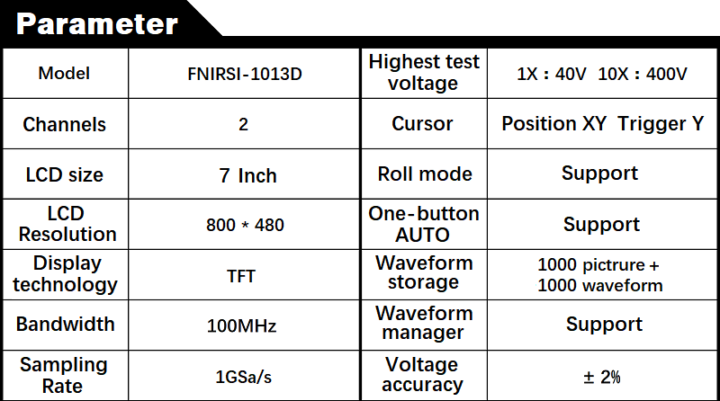



Is the purple trace an FFT spectrum?
Yes, this is about the FFT spectrum of Channel 1. You have the freedom to choose whether or not to display FFT on any channel.
Nice. I ordered one.
What’s the scale for it.
Have you tested the real bandwidth ? One video on Youtube shows that Fnirsi 1014D which apparently has the same design has a real bandwidth of around 30 MHz. AD9288 ADC chips are capable of max 200 MSa/s. Not so convinced that the advertised 1GSa/s is true. When opened the product link on Aliexpess, the price was $153. The price on Taobao for Fnirsi 1013D is around $90.
I haven’t tested bandwidth, if so, I can only say that 1GSa/s is data that can be reached in a specific environment of the manufacturer. My Aliexpress here does show $127.50, and as for other platforms I don’t list them, there may be cheaper purchasing channels.
Samples/second is not the band width. You need to sample more than once in a wave. Nyquist
Sure, the Nyquist theorem refers to pure sine waves where is needed at least twice the frequency. But usually oscilloscopes with real 200MSa/s sampling are rated with bandwidth around 20 MHz. Some manufacturers state – sampling in equivalent time, presume this could refer to time shifted multi-sampling ? And probably that is what 1GSa/s stands for ? It seems to me the specs are misleading.
Maybe the 1Gsa/s is the sum of both channels. Then to do a decent job of sampling a sawtooth it would end up with bandwidth of 50MHz – 1000 / 2 / 10
The nyquist theorm says nothing about pure sine waves.
A sine wave is simply a single frequency. A square wave is a set of frequencies starting at a fundimental frequency and a decreasingly intense odd multiple of the fundimental. They continue infinitely. Other common waveforms are similar–differing only in their harmonic content and intensity.
You cannot perfectly reproduce any of these more complex waveforms with a finite bandwidth.
EEVBlog maybe?
Seriously, you have a glaring typo, please fix it.
Does it only have Chinese localization available for the UI?
The UI is also available in English or other languages
Reviews at YouTube channels learnelectronics and EEVBlog both tested the bandwidth at about 30MHz instead of the claimed 100MHz. Dave at EEVBlog went further and actually probed the ADCs to verify that they sample at 200M Samples/s, not the claimed 1G Sample/s. (Note that unlike many true 1G Samples/s, scopes, this scope doesn’t share the ADCs when using both channels, so the sampling frequency is not halved when using both channels.)
I’m not saying this scope is junk, in fact I bought one even after watching the aforementioned reviews. I just want buyers to be aware.
You can try alternative firmware:
https://github.com/pecostm32/FNIRSI_1013D_Firmware
Thank you!!
Mine is in the US distribution center. It’s mainly a toy for me to play with. No use case, yet.
Thanks for the teardown and link to pecostm32 who seems to have done an amazing amount of work in reverse engineeing the firmware. You guys are amazing!
Where to get the V853 board?
https://sochip.en.alibaba.com/index.html?spm=a2700.shop_cp.88.4 ,It seems that Sochip is a distributor of Allwinner (not sure), there are quite a lot of Allwinner products in the store, but there should be other cheaper channels on aliexpress
Sochip are the expensive and official development boards for Allwinner.
On the plus side you will get everything you need from Sochip – layout, software, even some technical support.
I bought this oscilloscope based on (misleading) specifications. It is NOT the 1Gsa/s, 100MHz scope; it is actually 25MHz, 200Msa/s scope and it does not display fast signals correctly, its rise and fall time on vertical channel is ~10ns ( tested with 300ps input steps). I am wondering how comes that the product with false specifications is sold everywhere and the vendor is silently continues to put fake specifications.
To be fair, this scope works (although software has few bugs) and may be handy for automotive, power line and audio applications. The assembly quality is good. It simply does not deliver to advertised specifications.
P.S. And the signal on 10ns/s (fastest) horizontal range is always interpolated, it is impossible to see where the samples are (at 200Msa/s they should be 5ns apart). The scope does not have equivalent time mode, and also does not oversample on slow horizontal scales so you will see aliases. The sampling rates are 200MHz (10ns), 50MHz (1us), 5MHz (10us), 500kHz (100us). There is no trigger input, no TV trigger, no FFT display on the scope… The trigger is apparently based on the sampled data (i.e., will not be accurate at lower horizontal settings). It is very cheap product with a lot of compromises affecting performance.